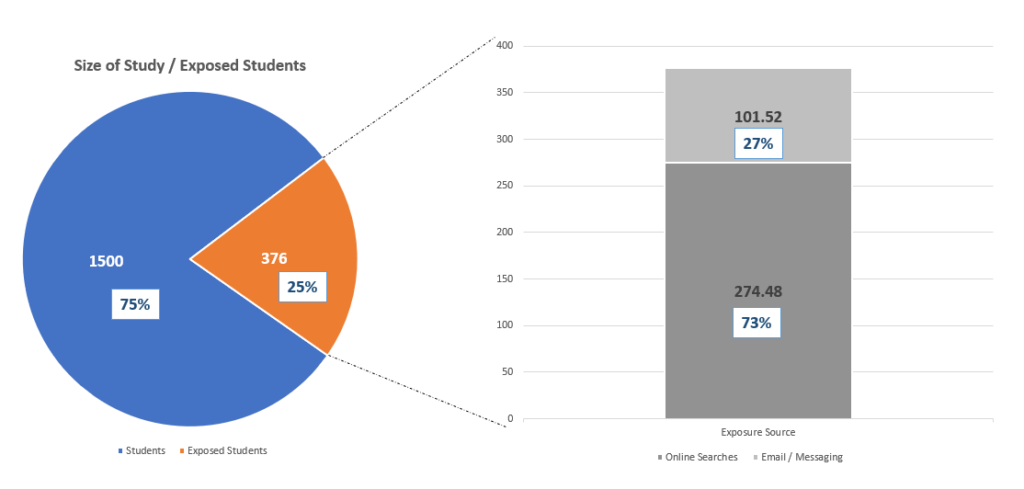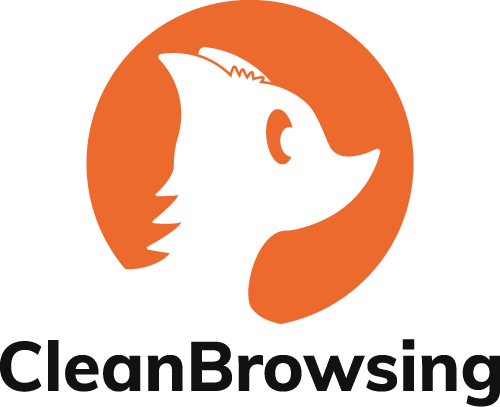One of the things that drove us to build CleanBrowsing was how easy it was to access both malicious and pornographic content online. Malicious content was something we were living and breathing at our startup at the time, but pornographic content was something a bit new and the focus was amplified by our own kids.
While anecdotal at the time, we found that our kids were always 2 – 3 clicks away from landing on some form of pornographic content. Most often via an ad, or reference, and in many instances completely unprovoked – meaning they didn’t intentionally search for it, it presented itself.
Coincidently, a study in 2003 by the University of New Hampshire, found that 25% of the kids they surveyed between the ages of 10 to 17 had what they categorized as “unwanted” exposure. This was a very curious finding because at the time, the general thesis was that young people would just naturally actively seek out pornography. This finding began to challenge that thinking.
That same study found that a 1/4 of the kids surveyed (1,501 participants) had been negatively effected by what they saw. Just last year, in my own family, a cousin under the age of 12 had a similar response to pornogrpaphic content that he stumbled on. A response that led him to being curled in a ball crying in bed and being physically shaken, both from curiosity and guilt.
Pervasiveness of Online Porn
If you’re curious about the scale of online pornography, WebRoot shared some interesting data that helps put this into context:
Every Second:
- 28,258 users are watching pornography on the internet.
- $3,075.64 is being spent on pornography on the internet.
- 372 people are typing the word “adult” into a search engine.
Every Day:
- 37 pornographic videos are created in the United States.
- 2.5 billion emails containing porn are sent or received.
- 68 million search queries related to pornography
25% of total searches- are generated. - 116,000 queries related to child pornography are received.
CovenantEyes also performed a study and found the following:
- – 57% of teens search out porn at least monthly.
- – 51% of male students and 32% of female students first viewed porn before their teenage years.
- – The first exposure to pornography among men is 12 years old, on average.
- – 71% of teens hide online behavior from their parents.
How Kids Stumble into Online Porn
As I reminisce on my own child-hood, I can vividly think of the times I would be curious about porn and that often meant trying to get a glimpse of what was behind the black strip on the magazine rack. Those experiences influence in many ways our thinking, where we just assume that kids will naturally seek out this content. And this was the common thinking, until the 2003 study.
In this study, researchers with University of New Hampshire spent a great deal of time trying to understand how exposure was happening. Here is what they found:
Of the 25% (376) exposed kids, 73% of the exposures occurred while performing basic online searches (think Google Search – although they don’t call out a specific search platform), the remaining 27% happened via email and instant messaging.
Because times have significantly changed since 2003, I would personally wager that social media (i.e., Facebook, Twitter, Instagram, etc..) has dramatically changed the exposure sources.

Another very interesting statistic they shared is where the exposure happened.
They found that 67% of the exposures occurred in the home environment, while 15% happened at school and 3% in libraries. Again, this was in 2003, and I would wager that as we continue to push for free and accessible internet the source dynamics will dramatically change to include cellular providers and public access points.
The study also found that 32% of the exposures were of people having sex, 7% were violent sexual encounters. The rest was mostly naked individuals.
Online Porn and its Impacts on Kids
The exact impacts on children are still being studied, but over the past years more information has been released by professionals. Dr. Sharon Cooper, forensic pediatrician and faculty member at the University of North Carolina Chapel Hill School of Medicine, is one of those professionals.
At the core of what she has brougth forth is is the impact it has on a child developing psychology, specifically in the form of introducing unhealthy sexual images that normalize sexual harm (to include rape).
“When a child sees this image of adult pornography, the mirror neurons that are in their brain will convince them that they are actually experiencing what they are seeing,” she said.
Children are very vulnerable as compared to adults because of the presence of mirror neurons in the brain, Dr. Cooper said. Mirror neurons are part of the brain that convince us that when we see something we are actually experiencing it.
According to the American Psychological Association, over the past 12 years, girls have changed in their thinking. They are beginning to see themselves as having their only value in sexuality.
“When a child sees herself only as a sexual object, she is no longer able to demand the kind of respect she deserves,” Dr. Cooper said. “The new definition of ‘love’ these days is sending a sexually explicit picture.”
This came during an interview in 2010 as the ‘epidemic’ of Net porn was cited as a motivation to get the government to act with new regulations and enforcements.
A study performed in 2017 by the Australian government, combating similar issues, summarized the effects succinctly. Although their research was limited they did find consistency in how pornography can influence the youth and surmised it as follows:
- Knowledge, awareness and education about sex including sexual practices, sexual health and sexual behaviors
- attitudes, beliefs and expectations about sex;
- attitudes, beliefs and expectations about gender;
- sexual behaviors and practices;
- sexual aggression; and
- mental health and well being.
The area of most common shared concern across most studies and professionals in the space is directly linked to “physical aggression” against individuals of the opposite sex (predominantly girls), and it’s normalization (e.g., slapping, choking, gagging, hair pulling, etc..) and objectification of the partner.
CleanBrowsing was Built out of Parental Responsibility
I will be the first to admit that when we started CleanBrowsing most of what we shared here was far from what we knew about the space. We just felt a responsibility as parents to create as safe an environment online as possible, we didn’t want our kids to be interrupted while online with content that we deemed too much at their young age.
As we study and become better informed of the impacts of online porn, the more we lean into that responsibility.
Although the studies are still actively happening, we encourage parents to peel back the vail of online pornography and have honest conversations with their children about what it is, it’s potential impacts, and how it skews expectations.
If you’re curious about what you can do to help curve access on your own network, we have prepared a simple guide to help – How to Stop Online Porn.
Content Filtering w/CleanBrowsing
CleanBrowsing provides a cost-effective DNS-based Content Filtering service that blocks access to unwanted content like malicious sites and online pornography. Pricing
